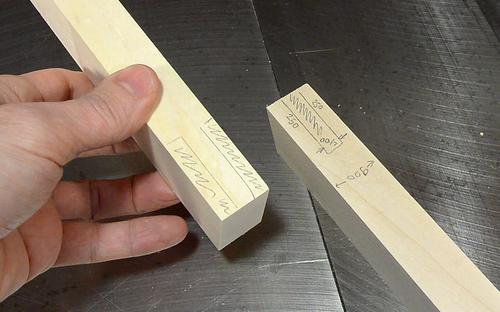 This article is about doing the setup for a bridle joint
on my quick-set tenon jig.
I'll start with the outside (bridle) part of the joint.
This article is about doing the setup for a bridle joint
on my quick-set tenon jig.
I'll start with the outside (bridle) part of the joint.
 This article is about doing the setup for a bridle joint
on my quick-set tenon jig.
I'll start with the outside (bridle) part of the joint.
This article is about doing the setup for a bridle joint
on my quick-set tenon jig.
I'll start with the outside (bridle) part of the joint.
I have a piece of stock that's 0.9" wide (900 thou). I want to cut away 0.400 from the middle, leaving 0.250" on either side.
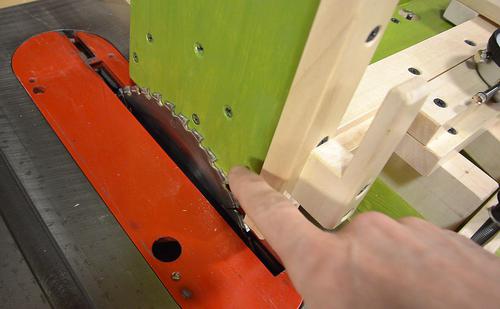
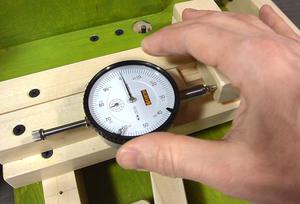 I start the set-up with the face of the jig up against the saw blade
and position the dial indicator so that it reads "0".
I start the set-up with the face of the jig up against the saw blade
and position the dial indicator so that it reads "0".
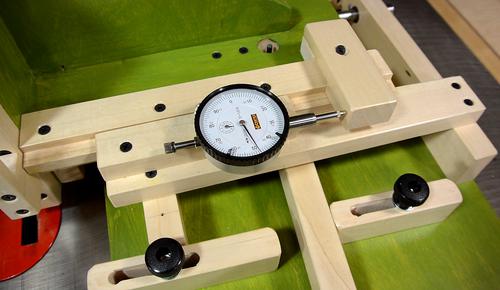 The slot will start 0.250" away from the edge, so I need to move the jig
by 0.250. Unfortunately, the dial counts backwards as I move away,
so I just count two and a half turns on the dial (each is 0.100").
I set the left stop block to stop the control
lever at that position.
The slot will start 0.250" away from the edge, so I need to move the jig
by 0.250. Unfortunately, the dial counts backwards as I move away,
so I just count two and a half turns on the dial (each is 0.100").
I set the left stop block to stop the control
lever at that position.
The blade itself already cuts a kerf of 0.100" (lucky it's an even number) so I need to move over by another 0.300" to cut a slot 0.400" wide. So I move the carriage to the right by three turns on the dial and set the right-side stop to that position.
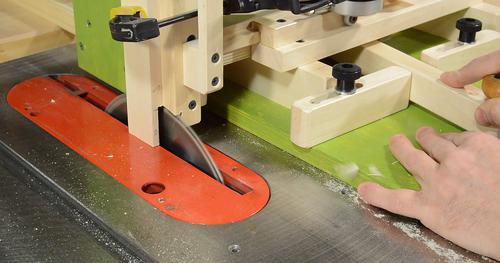 I then make a cut with the lever moved all the way left, another cut
with it all the way right, and then a series of cuts at positions
between to clear out the slot.
I then make a cut with the lever moved all the way left, another cut
with it all the way right, and then a series of cuts at positions
between to clear out the slot.
I make a final slow pass over the blade while moving the lever side-to-side to flatten out the bottom of the slot.
 To set up for the tenon, I again start with the jig touching the blade
and the dial indicator at zero. I need to cut away 0.250" on one side.
With the blade cutting a 0.100" wide slot, I need to move it
a further 0.150". I need to leave 0.400"
of material for the tenon. So the next cut needs to be offset
by 0.500" to compensate for the 0.100" that the blade cuts away.
To set up for the tenon, I again start with the jig touching the blade
and the dial indicator at zero. I need to cut away 0.250" on one side.
With the blade cutting a 0.100" wide slot, I need to move it
a further 0.150". I need to leave 0.400"
of material for the tenon. So the next cut needs to be offset
by 0.500" to compensate for the 0.100" that the blade cuts away.
So I set my two stops to those positions, and make the two cuts.
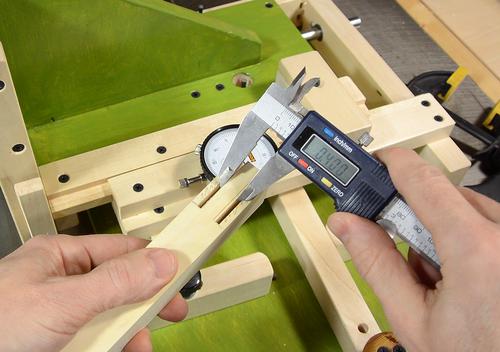 I did a quick check on the tenon, and it ended up at about 0.405",
so I moved one of the stops by about .005" and cut it again. This time,
the caliper read exactly 0.400".
I did a quick check on the tenon, and it ended up at about 0.405",
so I moved one of the stops by about .005" and cut it again. This time,
the caliper read exactly 0.400".
The slot on the bridle was actually at about 0.405", but you need a few thou for them to fit nicely. The wood has texture, and measuring with the caliper slightly compresses the wood, so a tenon that measures 0.400" would be difficult to force into a slot that also measures 0.400"
Saw blades will cut slightly wider or thinner kerfs, depending on blade vibrations and other factors, so the last 0.001" (0.025 mm) can be hard to get dead on.
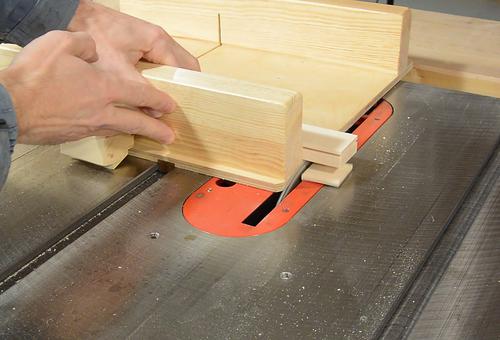 Cleaning up the shoulders of the tenon with two cuts on the table saw.
Cleaning up the shoulders of the tenon with two cuts on the table saw.
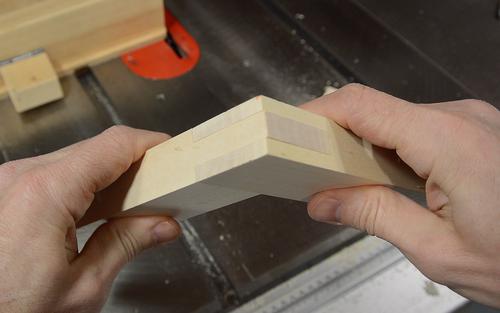 Perfect fit. Just enough friction to hold together on its own,
yet still easy to slide together with little force.
Perfect fit. Just enough friction to hold together on its own,
yet still easy to slide together with little force.
To my woodworking website